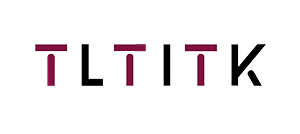Ошибка формата электронной почты
emailCannotEmpty
emailDoesExist
pwdLetterLimtTip
inconsistentPwd
pwdLetterLimtTip
inconsistentPwd

Новости
Здесь вы можете описать кусок текста, который хотите выразить

Vertical vs. Horizontal Digital Signage: A Comparison and Selection Guide
In the world of digital signage, two primary orientations dominate: vertical and horizontal displays. Whether you’re outfitting a retail store, office, or public space, choosing the right type of digital signage can make a significant difference in the overall impact of your message. This guide will walk you through the key differences between vertical and horizontal advertising screens and help you decide which one suits your needs.
Vertical Digital Signage:
Overview:
Vertical digital signage, often referred to as portrait mode, is designed to mimic the natural stance of a human body. It is ideal for displaying content such as videos, advertisements, and promotions that are meant to capture attention in a more dynamic and immersive way.
Key Advantages:
- Better for Vertical Content: Vertical displays are well-suited for content like social media feeds, news tickers, and full-length video ads.
- Space-Saving: Vertical screens are often narrower, making them great for tight spaces or high-traffic areas where traditional horizontal screens might be too wide.
- Engagement: Studies show that portrait mode can attract more attention and engagement, particularly in environments where customers are looking at items on shelves, such as retail stores.
Ideal Usage:
- Retail stores
- Shopping malls
- Digital kiosks
- Interactive displays
- Transportation hubs
Horizontal Digital Signage:
Overview:
Horizontal signage, or landscape mode, is the most common format seen in traditional displays like televisions and movie screens. It is ideal for showcasing a wide variety of content and tends to be the go-to for most signage applications.
Key Advantages:
- Wider Viewing Area: Horizontal displays are ideal for showing wide content such as landscape videos, presentations, and panoramic advertisements.
- More Versatility: This orientation works well for displaying multiple pieces of content side by side, offering more flexibility in content management.
- Better for Group Viewing: Horizontal screens work well when multiple people need to view the content simultaneously, such as in airports or conference rooms.
Ideal Usage:
- Airports and transport stations
- Conference rooms and meeting spaces
- Trade shows
- Entertainment venues (cinemas, theaters)
- Waiting areas (hospitals, banks)
Choosing Between Vertical and Horizontal Digital Signage:
When deciding between vertical and horizontal signage, consider the following factors:
-
Content Type:
- Vertical: Best for content that’s tailored for vertical displays (e.g., social media feeds, product advertisements).
- Horizontal: Ideal for wide-format content like videos, slideshows, and presentations.
-
Space Constraints:
- Vertical: Perfect for narrow or high-traffic spaces.
- Horizontal: Works well in larger areas or spaces that can accommodate wider displays.
-
Audience Interaction:
- Vertical: Great for interactive touchscreens or when you want to capture individual attention in busy areas.
- Horizontal: Suitable for group engagement, offering a broader view for more people.
-
Environment and Placement:
- Vertical: More suited for vertical display stands or as standalone kiosks.
- Horizontal: Ideal for wall-mounted screens or installations in larger rooms.
Conclusion:
Ultimately, the choice between vertical and horizontal digital signage comes down to the type of content you wish to display, the space available, and how you want your audience to interact with the display. Vertical signage works wonders for capturing individual attention in confined spaces, while horizontal displays are versatile and great for group viewing and a wide range of content. Consider your objectives and environment to make an informed decision that enhances your digital advertising strategy.

